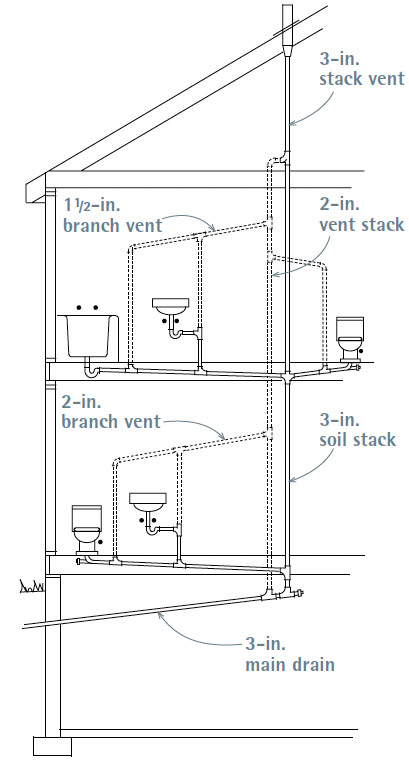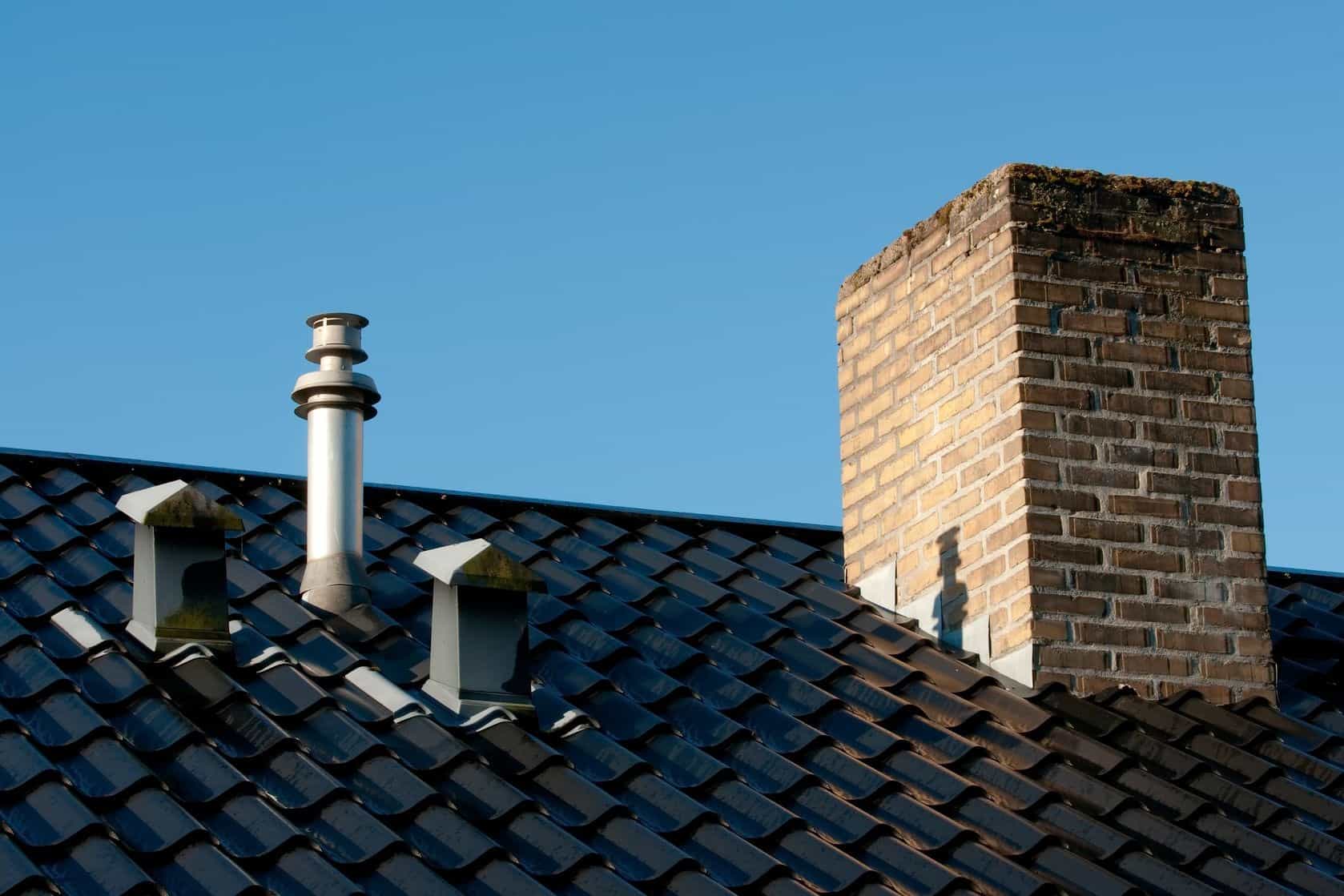The Role of Correct Ventilation in Supporting Plumbing Systems
The Role of Correct Ventilation in Supporting Plumbing Systems
Blog Article
This post below in relation to What Is a Plumbing Vent and Why Is It Important is extremely stimulating. Try it and draw your own final thoughts.

Correct air flow in pipes systems is typically ignored, yet it is crucial for preserving the capability and security of your home's pipes. Air flow helps control atmospheric pressure, prevent the build-up of harmful gases, and ensure the reliable removal of waste. In this overview, we will certainly explore the importance of appropriate pipes ventilation, how it functions, and the advantages it gives your pipes system.
Comprehending Air Flow in Pipes
Air flow in plumbing refers to the network of pipelines that enable air to move with the drain system. These vents serve numerous functions, including managing atmospheric pressure within the pipes, protecting against sewer gases from going into the home, and helping in the smooth flow of wastewater.
How Ventilation Functions in Plumbing Equipments
Air Pressure Policy
Appropriate air flow maintains balanced air pressure within the plumbing system. When water flows with pipes, it displaces air. Without appropriate ventilation, this displacement can develop adverse stress, causing slow down drains pipes or siphoning of water from traps, which can cause unpleasant smells to seep right into the home.
Protecting Against Sewer Gas Accumulation
One of one of the most essential functions of plumbing vents is to stop drain gases, such as methane and hydrogen sulfide, from accumulating within the home. These gases can present significant health risks and are highly flammable. Vent pipes allow these gases to escape securely outside.
Aiding in Waste Removal
Air flow assists in the effective elimination of wastewater by avoiding airlocks in the drain system. When air can stream freely through the vents, it permits water and waste to move smoothly through the pipelines, lowering the danger of obstructions and back-ups.
Sorts Of Pipes Vents
Key Heap Vent
The primary pile vent, additionally called the vent pile, is the primary air vent in a plumbing system. It expands from the primary drainpipe line up with the roof, allowing gases to leave and fresh air to get in the system.
Branch Vent
Branch vents attach to the main stack vent and serve individual fixtures, such as sinks, bathrooms, and showers. These vents make sure that each component has appropriate air flow to operate effectively.
Air Admittance Valve (AAV).
An Air Admission Shutoff (AAV) is a one-way valve that allows air to get in the pipes system without the requirement for a standard air vent pipe prolonging through the roof. AAVs are commonly utilized in remodellings or locations where setting up a basic air vent is not practical.
Indications of Poor Air Flow in Pipes.
Slow Draining Fixtures.
If your sinks, tubs, or toilets are draining pipes gradually, it could be a sign of inadequate ventilation. Inadequate air circulation can develop a vacuum result, making it tough for water to drain properly.
Gurgling Appears.
Gurgling sounds originating from drains are often an outcome of air being drawn via water catches due to adverse stress in the pipelines. This is a clear indicator of insufficient air flow.
Unpleasant Odors.
Drain smells inside your home are a warning that your plumbing system is not properly ventilated. This could suggest that sewer gases are not being sufficiently aired vent outside, bring about potentially harmful problems.
Usual Air Flow Blunders.
Poor Vent Sizing.
Making use of undersized air vent pipes can result in poor air flow and stress imbalances in the system. It's necessary to utilize vents that satisfy the particular requirements of your plumbing system.
Improper Vent Positioning.
Positioning vents too far from the fixtures they serve can lower their effectiveness. Correct positioning guarantees that air can stream easily and efficiently with the system.
Disregarding Code Needs.
Building regulations offer certain standards for plumbing air flow. Disregarding these codes can result in a system that fails to operate appropriately and might cause expensive repairs or health hazards.
Advantages of Correct Air Flow.
Enhanced System Efficiency.
Appropriately aerated pipes systems operate a lot more successfully, with fewer clogs, faster draining pipes, and less stress on the pipes. This effectiveness prolongs the lifespan of the plumbing system.
Improved Air Top Quality.
By stopping drain gases from entering your home, appropriate air flow adds to much better indoor air high quality, making your living atmosphere healthier and extra comfy.
Preventing Water Damage.
Ample air flow helps avoid water from being siphoned out of catches, which can bring about sewer gases getting in the home and causing water damage in time.
Actions to Make Certain Correct Ventilation.
Consulting Pipes Codes.
Constantly seek advice from local plumbing codes when creating or modifying your plumbing system. These codes give the required standards for appropriate venting and ensure your system fulfills security criteria.
Routine Examination and Maintenance.
Normal evaluations can aid determine possible ventilation problems before they become major issues. Maintenance tasks, such as cleaning up vent pipelines and looking for clogs, are vital for maintaining the system in good working order.
Expert Installment.
For brand-new installations or significant alterations, it's smart to hire an expert plumbing. They have the experience to make certain the ventilation system is correctly developed and mounted according to code.
Conclusion.
Correct ventilation is a vital component of any pipes system, making sure that it works successfully and safely. By understanding the relevance of air flow, identifying the indicators of inadequate ventilation, and taking actions to maintain your system, you can stop costly problems and safeguard your home's air high quality.
Understanding the Role of Your Plumbing Vents in the Drainage System
The plumbing system in your home is more than just the kitchen sink, toilet, and bathroom. Some problems that arise within home plumbing are hard to detect because homeowners may not understand potential causes.
One part of the plumbing system that could cause you endless problems is the venting. The drain lines that run through your home and drain wastewater need proper venting to function properly. Faulty plumbing vents can lead to several problems that require the expertise of a plumber to check them out. Before finding experienced plumbing services, there are a few things to learn about plumbing vents.
Why vents are vital
Vents in the plumbing system lead to an outside area such as the roof or the back. The function of these vents is to keep sewer gases away from the drain pipes. They also establish seals in the drainage pipes that prevent the sucking back of waste gases into the home. Venting in the plumbing system also allows oxygen to get into the drainage system, which is an essential component in the breakdown of waste matter. The vents also ensure that the air pressure within the drainage system remains balanced, facilitating the flow of wastewater.
Possible problems
When the plumbing vents are problematic, one of the consequences is imbalanced water levels in the toilet. If you notice that the levels in the toilet bowl rise and fall all the time, then there may be something wrong with the vents.
Another issue is air bubble formation within the toilet. In most cases like these, the drain pipes are not receiving enough air. Lack of air pressure equalization is what leads to water flow problems. If you come across such issues in your home, make sure you call professional plumbers, such as the ones from Perfection Plumbing & Drain Cleaning Ltd.
Potential causes
Several scenarios can lead to some of the plumbing problems that homeowners suffer because of venting. One such scenario is the use of incorrectly sized vents. Usually, vents are the same size as the drain line to facilitate proper venting. Vents that are too small will lead to some plumbing issues. Another potential cause is fixtures that are not close enough to the vents. In this scenario, air forces itself through the traps of other fixtures, leading to gurgling sounds from toilets and sinks.
Most of these problems also happen with clogged vents. Tree leaves and debris can cause clogging when they make their way down a vent. Unclogging plumbing vents is a service that you can entrust to Saskatoon plumbers. They will know how to snake down vents and remove clogging stuck in fixtures.

I am very intrigued by The Upsides of Proper Ventilation in Plumbing Design and I hope you appreciated the blog posting. Liked our posting? Please quickly share it. Help another person discover it. We appreciate your readership.
Call Us Now Report this page